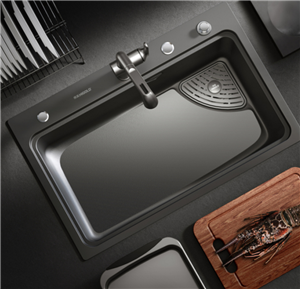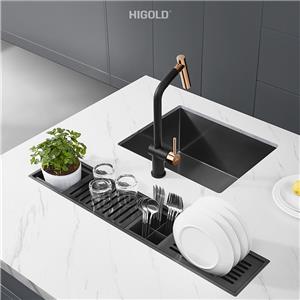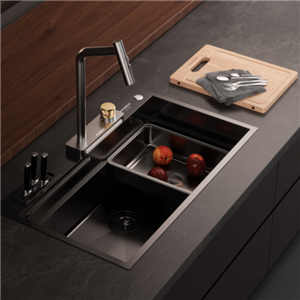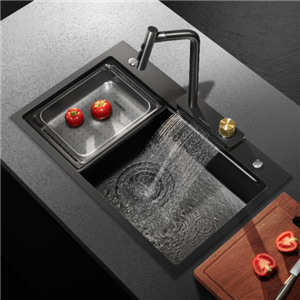What is the size of a comfortable kitchen sink?
The kitchen is one of the most important spaces in family life. As an essential infrastructure in the kitchen, the sink not only undertakes daily cleaning and washing tasks, but also has a profound impact on the overall use experience of the kitchen. Although the size of the sink is a seemingly simple design element, it plays an important role in the comfort, functionality and aesthetics of the kitchen. Choosing a suitable kitchen sink size can make cooking and cleaning easier and more convenient, and improve the use experience of the kitchen.
However, facing the dazzling array of sink sizes on the market, consumers are often confused. What size sink is suitable? Will the size be too large or too small to affect the use effect? What is the relationship between the sink size and factors such as the kitchen area, functional requirements, and the number of family members? These issues need to be carefully considered when designing the kitchen, and wise choices should be made according to actual needs.
This article will comprehensively explore the size of comfortable kitchen sinks, analyze the applicable scenarios and advantages and disadvantages of sinks of different sizes, and help consumers choose the most suitable sink size according to their own needs to ensure the comfort and efficiency of kitchen use.
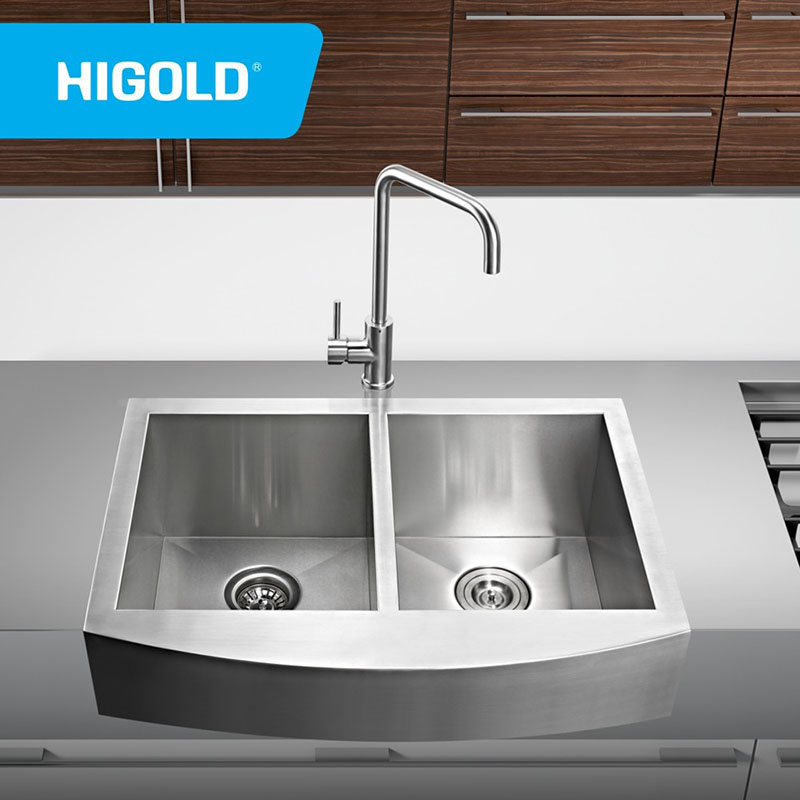
What is the importance of kitchen sink size?
The size of the kitchen sink is directly related to the efficiency of kitchen space and the comfort of cooking and cleaning. A sink that is too small may cause inconvenience when washing ingredients and tableware. When washing utensils or food, it may appear cramped due to limited sink space; while a sink that is too large will take up too much kitchen countertop space, resulting in insufficient operating countertops, and even affecting the overall layout of the kitchen. Therefore, a reasonable sink size should not only take into account the washing needs, but also be coordinated with factors such as kitchen area, functionality, and aesthetics.
● Meet cleaning needs: The main function of the sink is to wash tableware, ingredients, and perform water washing operations. Therefore, the size of the sink needs to meet the needs of daily cleaning. If the sink is too small, it will be very inconvenient to wash large items such as woks, large bowls, baking trays, etc.; on the contrary, if the sink is too large, although it can provide enough cleaning space, it will take up too much countertop space, affecting the convenience of other kitchen work.
● Space utilization: The space in the kitchen is usually limited, and the size of the sink needs to be coordinated with the size of the kitchen countertop to ensure that the sink does not take up too much space while providing enough operating space. A reasonable sink size can maximize the overall space of the kitchen while improving the functionality of the kitchen.
● Meet family needs: The number of members and lifestyles of different families are different, so the size of the sink should be selected according to the actual needs of the family. Large families may need a larger sink to accommodate more washing needs, while single or two-person families may prefer a smaller sink.
● Comfortable operating experience: The size of the sink affects the comfort of cooking. If the sink is too small, it may cause frequent transfer of items during use, increasing the complexity of operation; while an oversized sink may make it too spacious when washing ingredients or tableware, resulting in unnecessary waste of space.
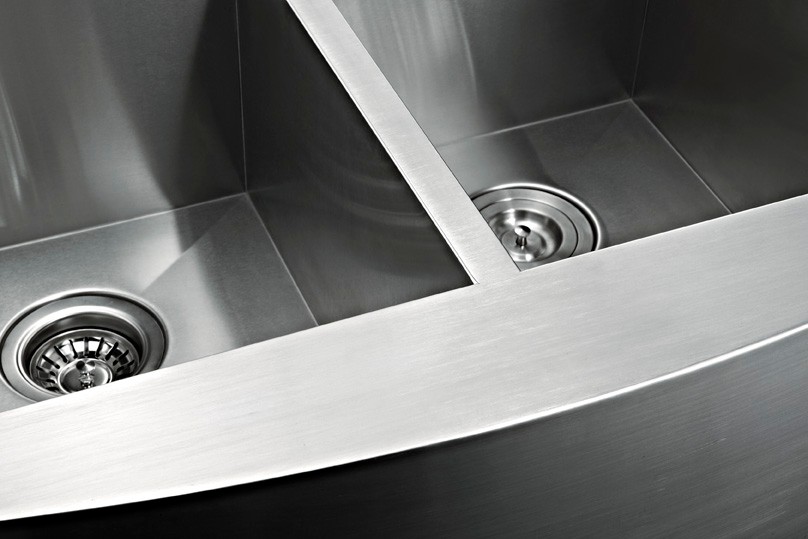
What are the size classifications of kitchen sinks?
Depending on the different types of kitchen sinks, functional requirements and kitchen designs, there are many types of kitchen sinks on the market. Generally speaking, the size of kitchen sinks can be classified according to the following types:
Single-bowl sinks:
● Common sizes: Single-bowl sinks are usually the most commonly used sink type in home kitchens, suitable for small kitchens or families that require simpler cleaning operations. Common sizes of single-bowl sinks are 50cm x 40cm, 60cm x 45cm, 70cm x 50cm, etc.
● Applicable scenarios: Single-bowl sinks are usually suitable for small families, single apartments or families with limited kitchen space due to their simple and space-saving design. They are suitable for washing daily dishes, small amounts of food, etc., but not suitable for multiple operations at the same time.
Double-bowl sinks:
● Common sizes: Double-bowl sinks are usually larger in size and can provide more operating space. Common double-bowl sink sizes are 75cm x 45cm, 80cm x 50cm, 90cm x 50cm, etc.
● Applicable scenarios: Double-bowl sinks are suitable for medium or larger families, especially for kitchens that require multi-tasking operations. One trough can be used to wash food, and the other trough can be used to wash dishes, kitchen utensils, etc. The double-bowl design can effectively improve the convenience of kitchen operations.
Three-bay sink:
● Common size: Three-bay sink is a common choice in some large families or commercial kitchens, with common sizes of 90cm x 50cm, 100cm x 60cm, etc.
● Applicable scenarios: Three-bay sink is usually suitable for commercial kitchens, large family kitchens or multi-task efficient operation kitchen design. It can provide partitioned washing, which is convenient for washing dishes and can wash ingredients and kitchen utensils separately to meet the needs of different family members.
Deep sink and shallow sink:
● Deep sink: The depth of deep sink is usually between 20cm and 25cm, suitable for families who need to wash a lot of ingredients or have a large kitchen space and high demands. Deep sink can avoid water splashing, but it is also necessary to pay attention to whether it is adapted to the height to avoid inconvenience during operation.
● Shallow sink: The depth of shallow sink is usually 15cm to 18cm, suitable for families with small kitchen space or do not need too many items to wash. Shallow sink is suitable for quick washing or placing small items for washing, but may not be suitable for washing larger kitchen utensils or tableware.
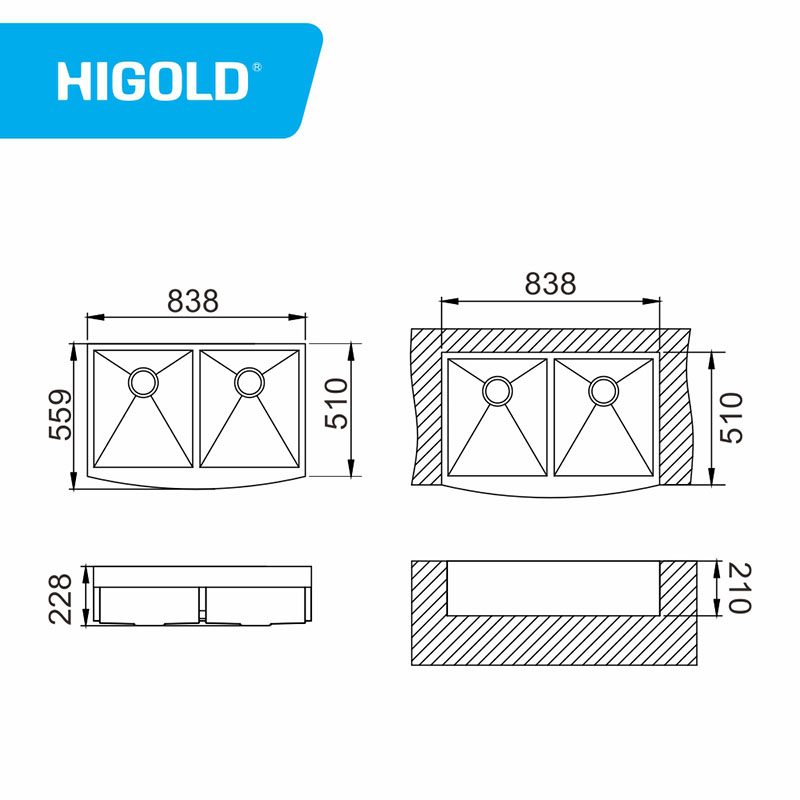
How to choose the right sink size?
Choosing the right kitchen sink size requires comprehensive consideration based on the actual kitchen space and family needs. The following factors are the key considerations when purchasing a sink:
Kitchen space size:
For small kitchens, the size of the sink should be chosen to save space as much as possible. Single-bowl sinks are usually the ideal choice, as they can take up less countertop space while ensuring functionality.
For larger kitchens, especially open kitchens or kitchens with island designs, you can consider choosing larger sinks, such as double or triple bowl sinks, to improve operating efficiency and separate the washing area.
Number of family members:
If you are a single or a couple, a single-bowl sink of 60cm x 45cm or 70cm x 50cm is usually enough to meet your needs. For families with smaller space requirements, single-bowl sinks are ideal in terms of ease of operation and space utilization.
For large families or multiple people sharing a kitchen, it is recommended to choose a double-bowl sink of 75cm x 45cm or larger. A large sink can provide more washing space and avoid the feeling of crowding when multiple family members use the kitchen at the same time.
Kitchen functional requirements:
If a large amount of food processing or cooking is required in the kitchen, it is more appropriate to choose a deep sink. A deep sink can hold more water and items, and can prevent water from splashing out of the sink.
For kitchens that pursue efficient operation, especially kitchens that need to perform multiple operations frequently, choosing a double or triple sink is an ideal choice, which can achieve the separation of multiple operation areas and improve the convenience of use.
Sink location and layout:
Sinks are usually installed on the kitchen countertop, so the size of the sink needs to be coordinated with the overall kitchen layout. Ensure that the sink has enough space for smooth water supply and does not interfere with the operation of other areas. If the sink is located away from the countertop, you can choose a slightly larger sink so that the operator has enough space.
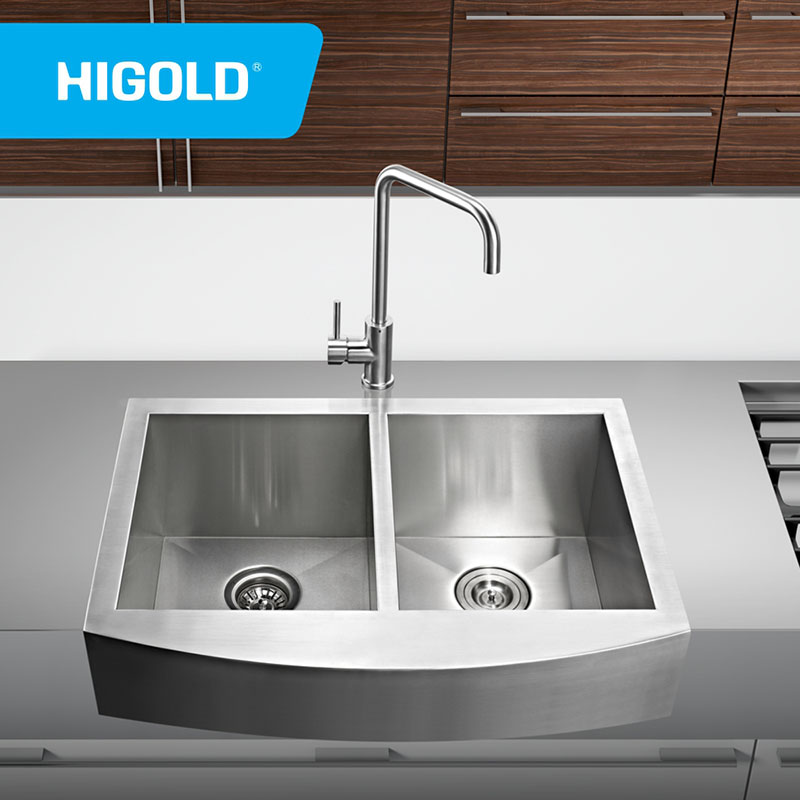
Common sink size selection suggestions
● Small kitchen: For small kitchens with limited space, it is recommended to choose a single-bowl sink of 50cm x 40cm or 60cm x 45cm. This size can ensure basic cleaning functions without taking up too much countertop space.
● Medium-sized kitchen: For ordinary family kitchens, it is ideal to choose a double-trough sink of 70cm x 45cm or 75cm x 50cm. This can provide enough cleaning space to meet the needs of different family members.
● Large family or commercial kitchen: For kitchens with larger spaces, especially large families or commercial kitchens, it is more appropriate to choose a double-trough or triple-trough sink of 90cm x 50cm or larger, which can improve operating efficiency and separate the cleaning area.
Higold: Manufacturer of High-Quality Stainless Steel Kitchen Hardware
As a leading manufacturer in the kitchen hardware industry, Higold Group Co., Ltd. offers high-quality stainless steel Inox sinks and kitchen faucets at wholesale prices. With over 20 years of experience, our factory is equipped with cutting-edge technology to ensure that every product meets the highest standards. We offer flexible purchasing options, including customized designs, bulk orders, and factory-direct pricing. Our commitment to innovation and customer satisfaction makes us a preferred choice for kitchen hardware globally.

